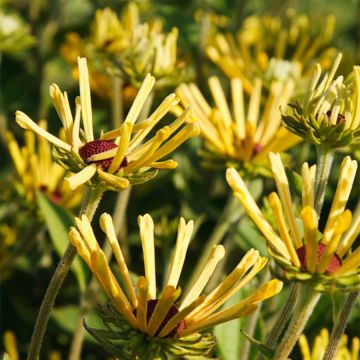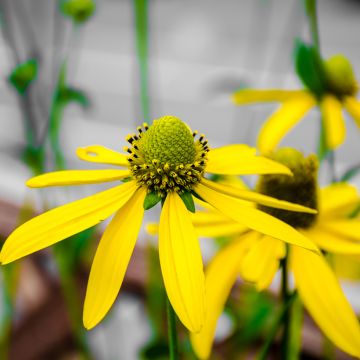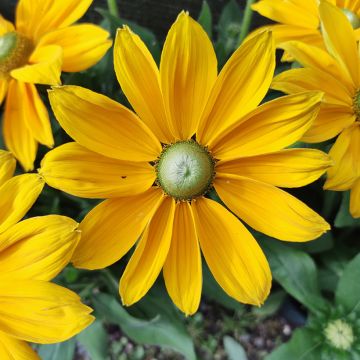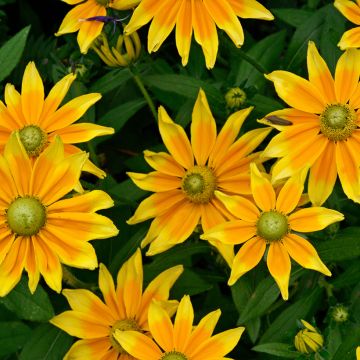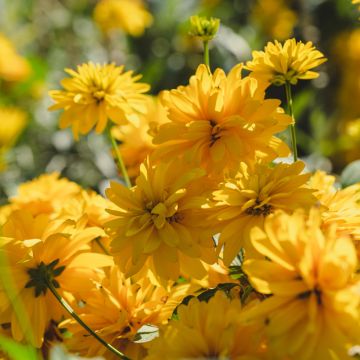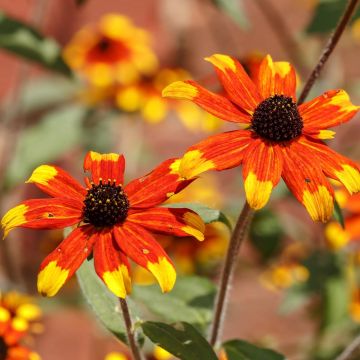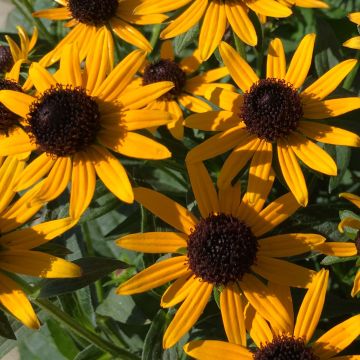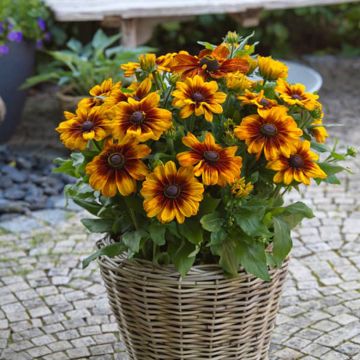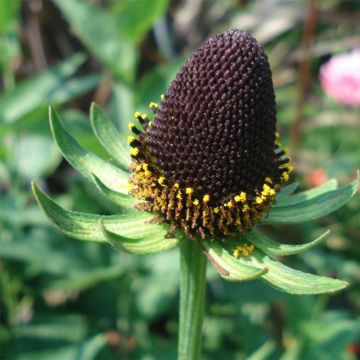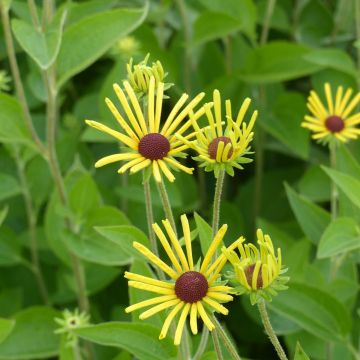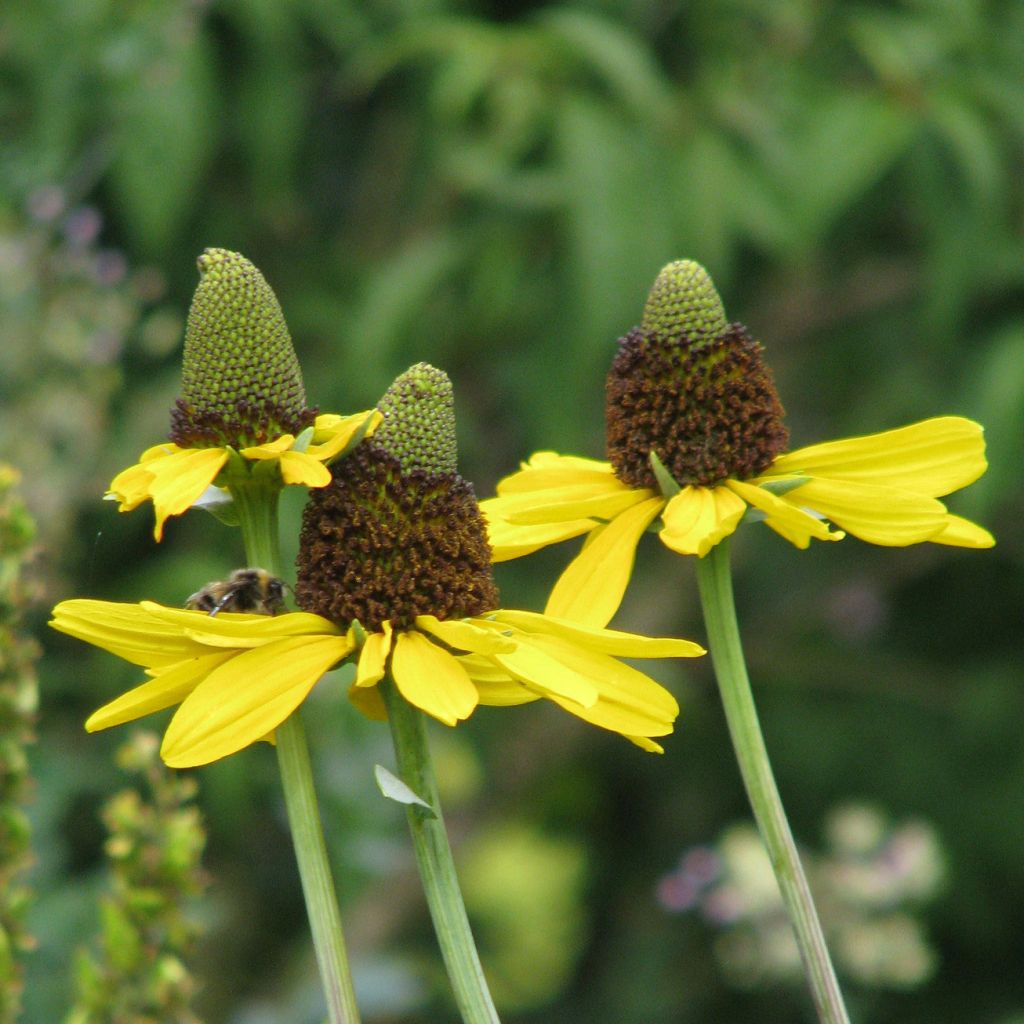

Rudbeckia maxima
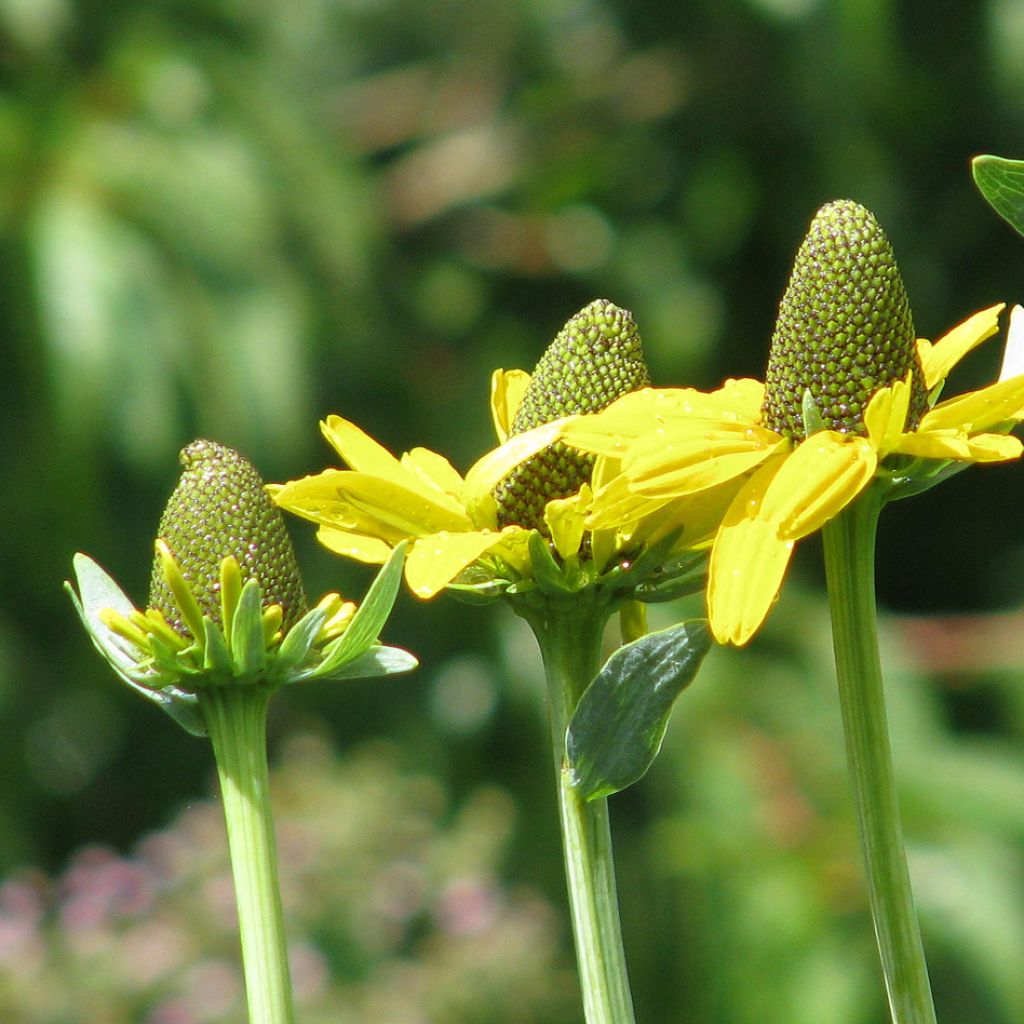

Rudbeckia maxima
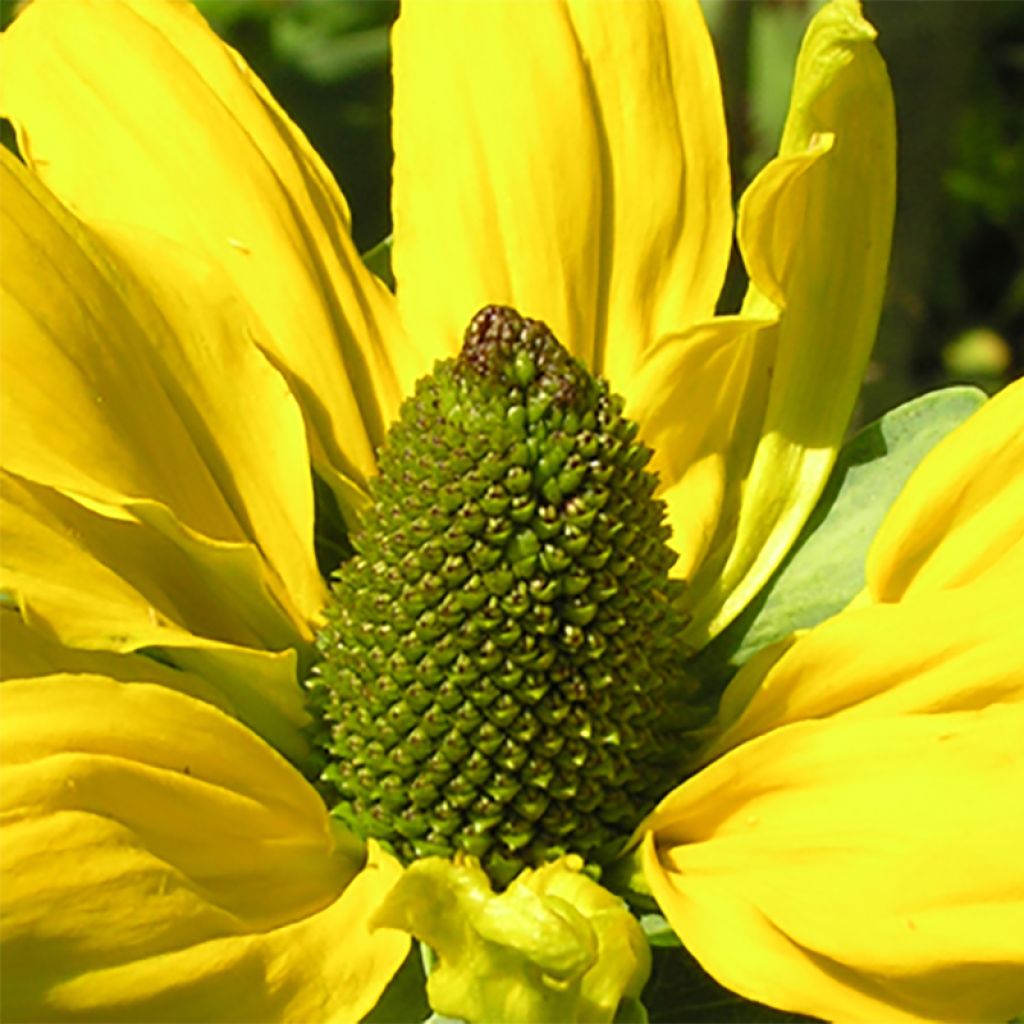

Rudbeckia maxima
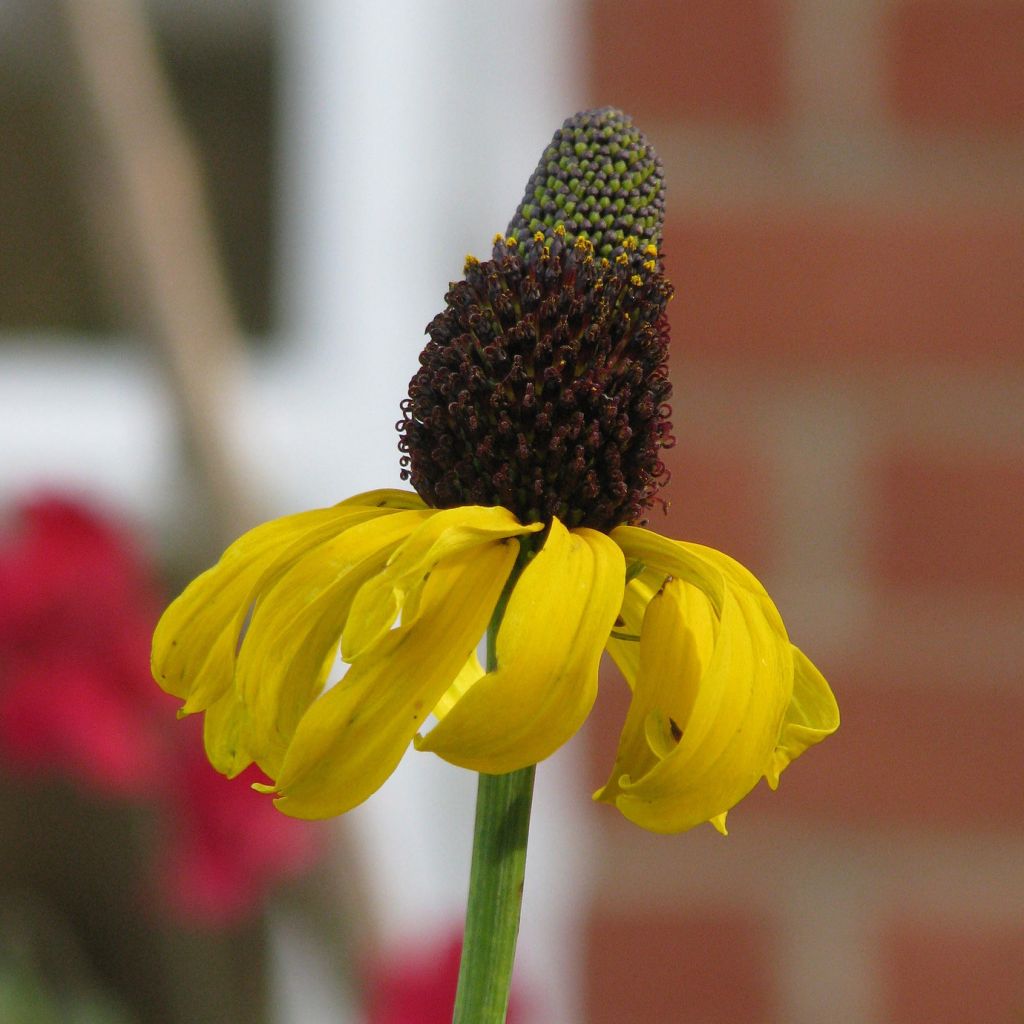

Rudbeckia maxima
Rudbeckia maxima
Rudbeckia maxima
Great Coneflower, Giant Coneflower, Large Coneflower
This plant carries a 12 months recovery warranty
More information
We guarantee the quality of our plants for a full growing cycle, and will replace at our expense any plant that fails to recover under normal climatic and planting conditions.
From €5.90 for pickup delivery and €6.90 for home delivery
Express home delivery from €8.90.
Does this plant fit my garden?
Set up your Plantfit profile →
Description
Rudbeckia maxima, also known as Great Coneflower or Giant Rudbeckia, is a stunning, perennial plant of impressive size, honey-bearing, essential in a natural garden. Luxuriant and highly original, it is adorned with large, pure and vibrant yellow flowers, similar to daisies, with its petals gently trailing around a very prominent dark cone. They bloom from September to November if the weather is mild, above a magnificent, spreading, silvery blue-green foliage. Loved by insects and birds, this wild-looking plant will be appreciated by gardeners at the back of borders, when, in autumn, its sunny flowering and unusual foliage blend with flamboyant bushes. In cool, sunny locations, it can reach gigantic proportions.
Rudbeckia maxima belongs to the Asteraceae family. This tall perennial, native to the central and southern United States, grows wild in various locations such as wooded areas, wet meadows, pastures, and along roadsides in Arkansas, Oklahoma, Louisiana, and Texas. This plant is a conqueror, both highly adaptable and truly original. It forms a bushy clump of sturdy, erect stems that can easily reach a height of 150cm (59in), with a spread of 60cm (24in). Its foliage is surprising, which is why this perennial is called Cabbage Leaf Coneflower across the Atlantic. Its broad, thick, waxy, silvery blue-green leaves, sometimes 30cm (12in) long, are larger towards the base of the stem. The resulting clump also resembles a giant annual poppy. When the flowering appears in late summer, the show continues, just as surprising: at the ends of the long stems, solitary, daisy-like flower heads of bright yellow, 6cm (2in) in diameter, with slightly trailing ligulate petals, surround a very prominent central cone, dark brown with honey-coloured reflections. The seeds left in place attract birds, feeding goldfinches and tits in early winter.
Take advantage of the strong presence of Rudbeckia to associate it with short-lived flowering plants within a cottage garden-style mixed border. Choose varieties with softer, almost pastel shades to calm or even tame its conquering yellow. Positioned in the background, it will be most effective with English roses ('Winchester Cathedral', Eglantine), climbing vines (Clematis 'Grace'), perennials ('Silver Queen' Artemisia, white valerian, 'Alabaster' Agastache and bergamot), and dahlia bulbs ('Bishop of Dover' and 'Leicester' varieties). Planted en masse in front of shrub borders, Rudbeckia maxima will be magnificent when combined with the autumn foliage of deciduous ~Euonymus, Cotinus, Hydrangea quercifolia, Parrotia persica...
Report an error about the product description
Rudbeckia maxima in pictures
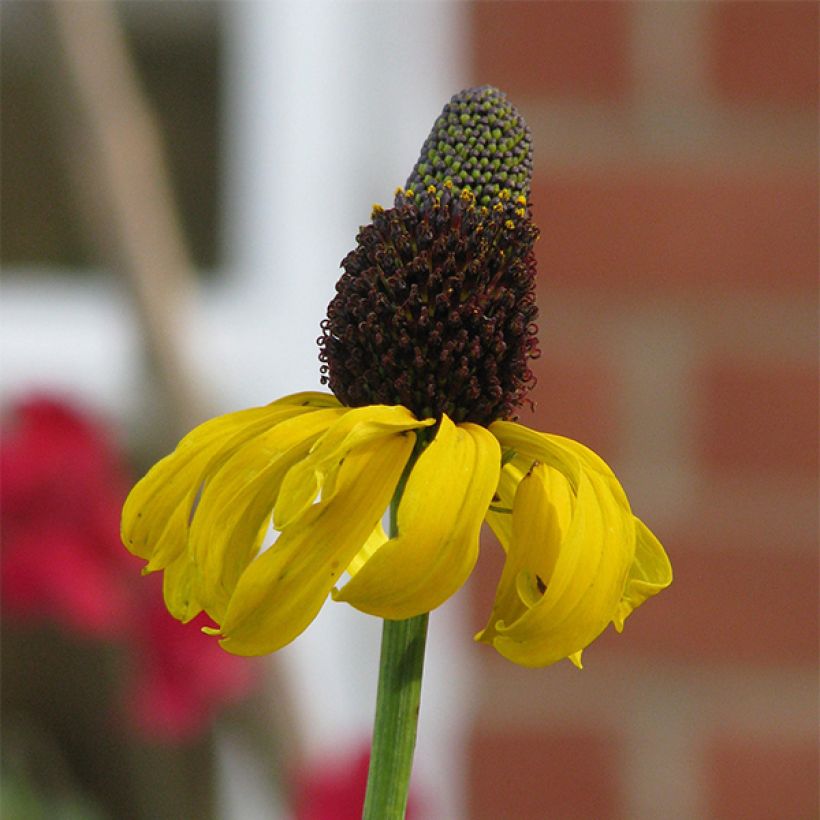

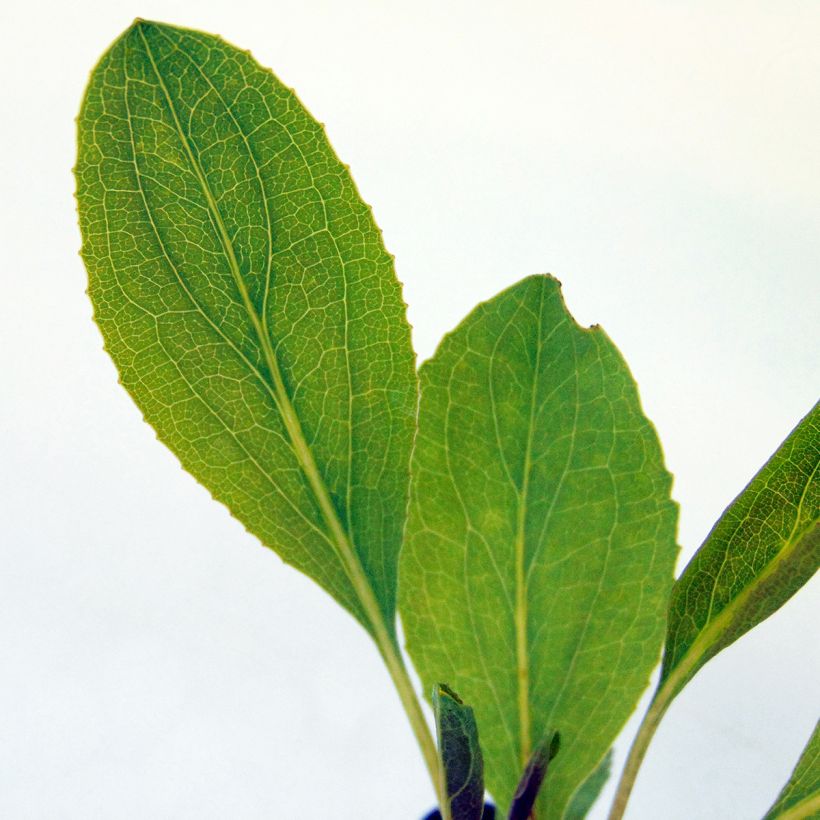

Flowering
Foliage
Plant habit
Botanical data
Rudbeckia
maxima
Asteraceae
Great Coneflower, Giant Coneflower, Large Coneflower
North America
Other Rudbeckia
Planting and care
Planting period
Intended location
Care
-
, onOrder confirmed
Reply from on Promesse de fleurs
Haven't found what you were looking for?
Hardiness is the lowest winter temperature a plant can endure without suffering serious damage or even dying. However, hardiness is affected by location (a sheltered area, such as a patio), protection (winter cover) and soil type (hardiness is improved by well-drained soil).

Photo Sharing Terms & Conditions
In order to encourage gardeners to interact and share their experiences, Promesse de fleurs offers various media enabling content to be uploaded onto its Site - in particular via the ‘Photo sharing’ module.
The User agrees to refrain from:
- Posting any content that is illegal, prejudicial, insulting, racist, inciteful to hatred, revisionist, contrary to public decency, that infringes on privacy or on the privacy rights of third parties, in particular the publicity rights of persons and goods, intellectual property rights, or the right to privacy.
- Submitting content on behalf of a third party;
- Impersonate the identity of a third party and/or publish any personal information about a third party;
In general, the User undertakes to refrain from any unethical behaviour.
All Content (in particular text, comments, files, images, photos, videos, creative works, etc.), which may be subject to property or intellectual property rights, image or other private rights, shall remain the property of the User, subject to the limited rights granted by the terms of the licence granted by Promesse de fleurs as stated below. Users are at liberty to publish or not to publish such Content on the Site, notably via the ‘Photo Sharing’ facility, and accept that this Content shall be made public and freely accessible, notably on the Internet.
Users further acknowledge, undertake to have ,and guarantee that they hold all necessary rights and permissions to publish such material on the Site, in particular with regard to the legislation in force pertaining to any privacy, property, intellectual property, image, or contractual rights, or rights of any other nature. By publishing such Content on the Site, Users acknowledge accepting full liability as publishers of the Content within the meaning of the law, and grant Promesse de fleurs, free of charge, an inclusive, worldwide licence for the said Content for the entire duration of its publication, including all reproduction, representation, up/downloading, displaying, performing, transmission, and storage rights.
Users also grant permission for their name to be linked to the Content and accept that this link may not always be made available.
By engaging in posting material, Users consent to their Content becoming automatically accessible on the Internet, in particular on other sites and/or blogs and/or web pages of the Promesse de fleurs site, including in particular social pages and the Promesse de fleurs catalogue.
Users may secure the removal of entrusted content free of charge by issuing a simple request via our contact form.
The flowering period indicated on our website applies to countries and regions located in USDA zone 8 (France, the United Kingdom, Ireland, the Netherlands, etc.)
It will vary according to where you live:
- In zones 9 to 10 (Italy, Spain, Greece, etc.), flowering will occur about 2 to 4 weeks earlier.
- In zones 6 to 7 (Germany, Poland, Slovenia, and lower mountainous regions), flowering will be delayed by 2 to 3 weeks.
- In zone 5 (Central Europe, Scandinavia), blooming will be delayed by 3 to 5 weeks.
In temperate climates, pruning of spring-flowering shrubs (forsythia, spireas, etc.) should be done just after flowering.
Pruning of summer-flowering shrubs (Indian Lilac, Perovskia, etc.) can be done in winter or spring.
In cold regions as well as with frost-sensitive plants, avoid pruning too early when severe frosts may still occur.
The planting period indicated on our website applies to countries and regions located in USDA zone 8 (France, United Kingdom, Ireland, Netherlands).
It will vary according to where you live:
- In Mediterranean zones (Marseille, Madrid, Milan, etc.), autumn and winter are the best planting periods.
- In continental zones (Strasbourg, Munich, Vienna, etc.), delay planting by 2 to 3 weeks in spring and bring it forward by 2 to 4 weeks in autumn.
- In mountainous regions (the Alps, Pyrenees, Carpathians, etc.), it is best to plant in late spring (May-June) or late summer (August-September).
The harvesting period indicated on our website applies to countries and regions in USDA zone 8 (France, England, Ireland, the Netherlands).
In colder areas (Scandinavia, Poland, Austria...) fruit and vegetable harvests are likely to be delayed by 3-4 weeks.
In warmer areas (Italy, Spain, Greece, etc.), harvesting will probably take place earlier, depending on weather conditions.
The sowing periods indicated on our website apply to countries and regions within USDA Zone 8 (France, UK, Ireland, Netherlands).
In colder areas (Scandinavia, Poland, Austria...), delay any outdoor sowing by 3-4 weeks, or sow under glass.
In warmer climes (Italy, Spain, Greece, etc.), bring outdoor sowing forward by a few weeks.

































